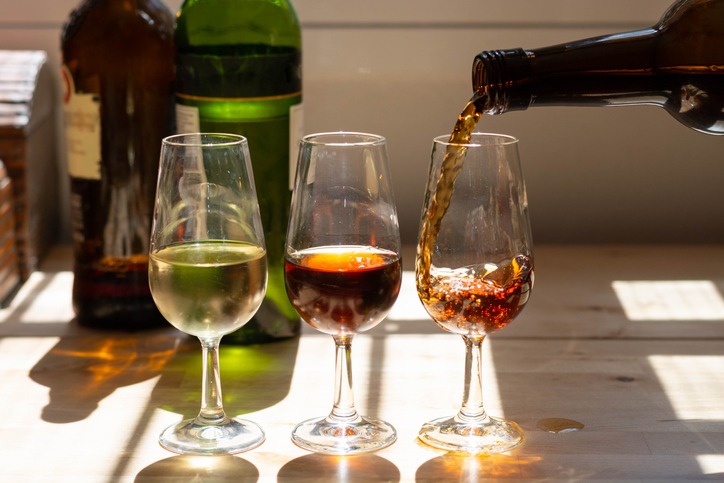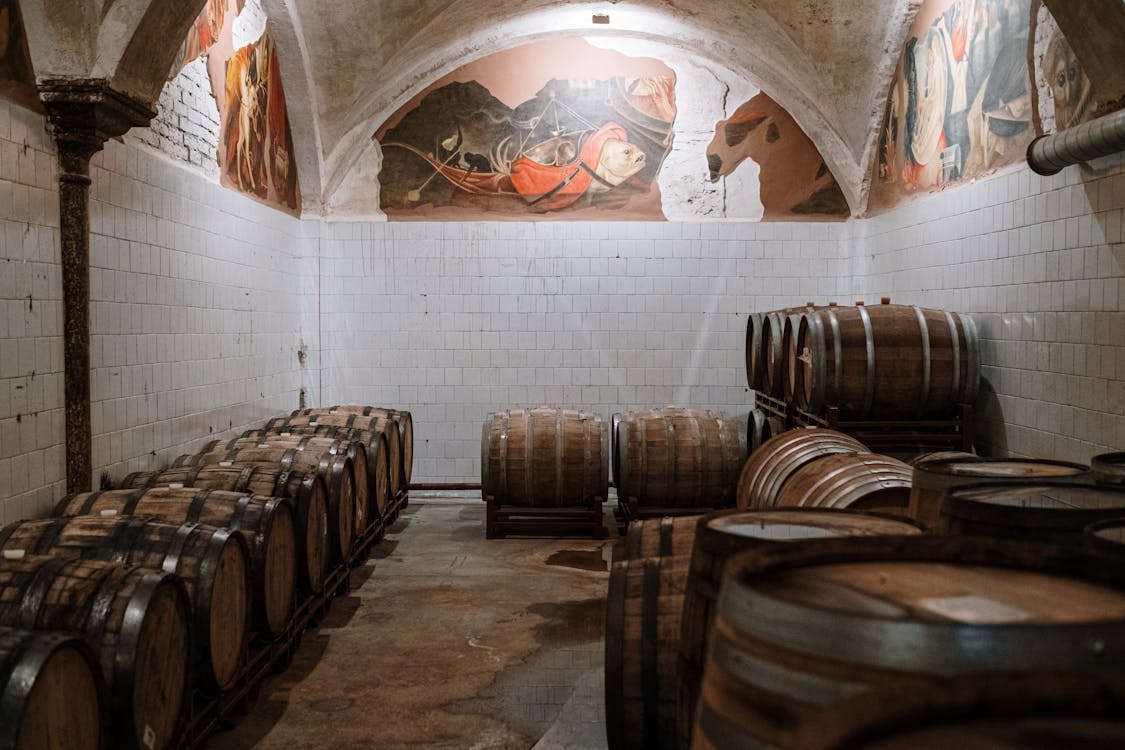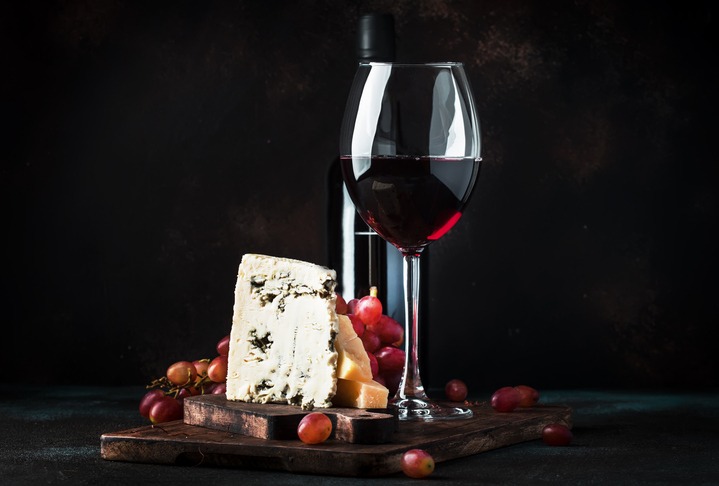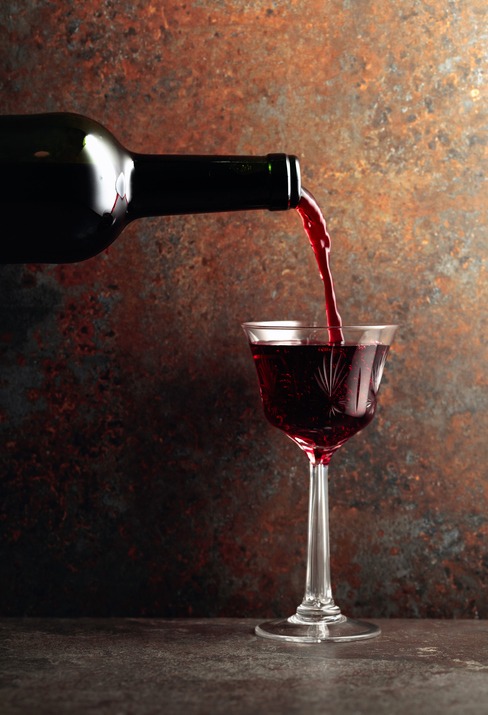Port and Sherry are two iconic fortified wines that have been enjoyed for centuries, each with its own unique character and production method. They share the common trait of fortification, where spirits are added, but their origins, grape varieties, and taste profiles set them apart. Port hails from the Douro Valley in Portugal and is traditionally made from a variety of red grapes, giving it a rich, sweet, and robust profile, often with higher alcohol content. Port wine is renowned for its variety of styles, including Tawny, Ruby, and Vintage, each offering a distinct experience.
Sherry, on the other hand, finds its roots in the Andalusia region of Spain, specifically around the town of Jerez. Crafted primarily from white grapes such as Palomino and Pedro Ximénez, Sherry’s spectrum ranges from dry to sweet. The soil and climate in Jerez contribute to Sherry’s unique taste, along with the solera aging system that imparts complexity. Styles of Sherry include Fino, a light and dry variety, and Oloroso, which is richer and more aromatic. The result is a versatile wine that can be enjoyed as an aperitif, with a meal, or as a digestif.
Understanding Port and Sherry
In exploring the nuanced world of wine, two distinctive fortified wines stand out for their rich history and unique production methods: Port and Sherry. They hail from specific regions of Portugal and Spain, respectively.
Origins and History
Port originates from the Douro Valley in Portugal, with a history deeply rooted in trade and regional pride. The wine gained prominence in the 17th century when it became a favored export to England. Port is named after the coastal city of Porto from which the wine was traditionally shipped.
Sherry, on the other hand, comes from the Jerez de la Frontera region in Andalusia, Spain. Its name is an anglicization of “Jerez,” and its production dates back to at least Roman times, flourishing under Moorish rule and later under Spanish governance to become one of the world’s first systematically produced wines.
Grape Varieties
The grape varieties used in Port and Sherry production are central to their character.
For Port:
- Main Varieties: Touriga Nacional, Tinta Roriz (known as Tempranillo in Spain), Tinta Barroca
- Less Common Varieties: Over 80 approved varieties, with Tinta Cão and Tinta Amarela being noteworthy.
For Sherry:
- Primary Grape: Palomino, used mainly for dry Sherries.
- Sweet Varieties: Pedro Ximénez and Moscatel grapes are sun-dried to concentrate sugar for sweeter styles.
Portugal’s Douro Valley creates a rugged terrain and climate ideal for the cultivation of the robust, hearty grapes necessary for Port production. In contrast, the white wine grapes grown in the chalky soils of Spain’s Jerez are perfect for the complex aging process Sherry requires.
Winemaking Process
The key distinction in the winemaking process of Port and Sherry lies in when and how fortification occurs, as well as their distinct aging processes.
Fermentation and Fortification
Port and Sherry are both fortified wines, meaning that brandy (a distilled spirit) is added during their production. However, their fortification points differ significantly. In the case of Port, fermentation is interrupted by the addition of brandy, which raises the alcohol content and maintains the wine’s natural sweetness from unfermented grape sugars. Typically, yeast in Port only partially converts sugar into alcohol before being stopped by the addition of brandy, usually when about half of the fermentation process is complete.
Conversely, Sherry undergoes complete fermentation, and brandy is added afterward. This fully ferments all sugars into alcohol, resulting in a distinctly dry base wine before fortification. The presence of flor, a layer of yeast that develops on top of some styles of Sherry during the initial stages of aging, plays a crucial role. This flor influences the flavor and protects the wine from oxidation.
Aging and Maturation
The aging process for both wines contributes extraordinary to their final character. Port is aged in barrels that do not completely prevent the wine from contact with air, allowing a controlled amount of oxidation. This oxidative aging is crucial for developing the rich and complex flavors found in Port, especially in varieties known as “aged tawnies.”
In Sherry production, the wines are categorized based on their aging method: biologically aged under flor, or oxidatively without it. Biological aging occurs when the wine is aged under a layer of flor, preventing oxidation and resulting in lighter and more delicate styles like Fino and Manzanilla. Oxidative aging, without flor, leads to darker and more robust Sherries like Oloroso. Finally, the solera system—a fractional blending process—is often used in Sherry maturation. This system perpetually mixes younger wines with older ones, ensuring consistency and complexity.
Characteristic Flavors and Styles
In exploring the characteristic flavors and styles of Port and Sherry, one will find a diverse range of tastes influenced by variations in sweetness, color, and aging processes.
Diverse Flavor Profiles
Port and Sherry exhibit a remarkable variety of flavor profiles. Port, often richer and sweeter, presents a spectrum from fruity to nutty notes:
- Ruby Port: Fresh, fruity, and vibrant with berry flavors.
- Tawny Port: Aged in wood barrels; displays flavors of caramel, nuts, and dried fruits.
- White Port: Made with white grapes, delivering a lighter, crisper flavor often with a hint of sweetness.
In contrast, Sherry ranges from very dry to quite sweet, depending on the type:
- Fino and Manzanilla: Light, dry, and with a hint of almond flavor; aged under a layer of yeast called flor.
- Amontillado: A dry Sherry that is darker than Fino with richer, nutty flavors.
- Oloroso: Full-bodied and less sweet, often exhibiting bold nutty and spicy flavors.
- Cream Sherry: Sweeter and often used as a dessert wine, with a syrupy texture and flavors of dried fruit.
Color and Sweetness
The color of these fortified wines can be indicative of their style and sweetness:
- Port: Typically deep red for Ruby; amber to brown for Tawny; pale straw for White.
- Sherry: Ranges from light straw for Fino and Manzanilla to golden amber for Amontillado and deep mahogany for Oloroso.
Sweetness levels in both wines are influenced by the amount of residual sugar. Ports generally have a higher sugar content, contributing to their sweetness, while Sherries offer a range from very dry to very sweet, denoted by designations like dry Sherry or sweet Sherry. Cream Sherry, for instance, has a higher sugar content and a sweeter flavor profile compared to the dry and minimally sweetened variants such as Fino.
Serving and Pairing
When selecting serveware and determining food pairings for Port and Sherry, understanding their distinct characteristics allows for an enhanced tasting experience. The right glassware and complementary foods can accentuate the flavors and aromas of these dessert wines.
Appropriate Serveware
For Port, a small wine glass or a specific port glass, typically smaller than a regular wine glass, is ideal. This enhances the wine’s rich aromas and ensures that it’s consumed in moderate quantities, given its higher alcohol content. Sherry, on the other hand, is best served in a copita or a tulip-shaped glass that helps concentrate the complex bouquet of the wine.
Food Pairings
Port is extensively known for pairing well with rich, strong cheeses and decadent chocolate desserts. Pairings often include:
- Cheese: Blue cheese, such as Stilton or Gorgonzola, as the creamy texture and pungent taste create a balance with Port’s sweetness.
- Chocolate: Dark chocolate benefits from Port’s fruity and spicy notes, providing a harmonious combination for the palate.
For Sherry, the pairings can vary widely depending on its sweetness spectrum—ranging from dry to sweet. A sommelier might recommend the following:
- Seafood: Dry Sherry, such as Fino or Manzanilla, pairs splendidly with seafood, including shrimp and oysters, enhancing the briny flavors.
- Nuts: Almonds and hazelnuts go well with Amontillado or Oloroso, where their nutty flavors complement the rich and nuanced profile of these Sherries.
- Dessert: Sweeter Sherries like Pedro Ximénez can be served with dessert or as a dessert themselves, often alongside fruit-based dishes or creamy puddings.
In both instances, the key is to serve these dessert wines at the correct temperature: chilled for Sherry and slightly below room temperature for Port, to ensure the best taste experience. Cocktails utilizing Port or Sherry should also be considered, as they offer a way to enjoy these wines in a more diluted and mixed form while still highlighting their unique characteristics.
Cultural and Regional Significance
Port and Sherry reflect a deep-rooted cultural heritage from Portugal and Spain, respectively, shaped by unique regional practices and historical significance.
Traditions and Regulations
Portugal houses the Douro Valley, the prestigious region that grants Port its name. This fortified wine is deeply woven into Portuguese history, with its production regulated by the Instituto dos Vinhos do Douro e Porto. Only wine from this region can be labeled “Port,” ensuring strict adherence to traditional methods. Varietals such as Touriga Nacional and Tinta Barroca are commonly used, aligning with the terroir of Northern Portugal.
On the other side of the Iberian Peninsula, Sherry hails from the Jerez area in Spain. Regulated by the Consejo Regulador, Sherry can only be produced in the “Sherry Triangle” – an area bounded by Jerez de la Frontera, Sanlúcar de Barrameda, and El Puerto de Santa María. Sherry’s production involves the solera system, where younger wines are blended with older ones, and often utilizes the Palomino grape as the primary varietal.
Global Impact and Recognition
Both Port and Sherry have influenced global wine markets. Their recognition extends far beyond the Iberian Peninsula, symbolizing the distinctiveness of Iberian fortified wines on the international stage. The rich history and characteristic profiles of these wines have led to their incorporation into diverse culinary traditions, pairing with everything from decadent desserts to refined appetizers.
Sherry particularly took root in British and Dutch culinary traditions, while Port found its place as a staple in distinguished social events and holidays. Through centuries of trade and cultural exchange, both wines have garnered a reputation for quality, becoming integral to the local economies of the Jerez Region and Northern Portugal, and by extension influencing the viniculture of Madeira and other fortified wines.






